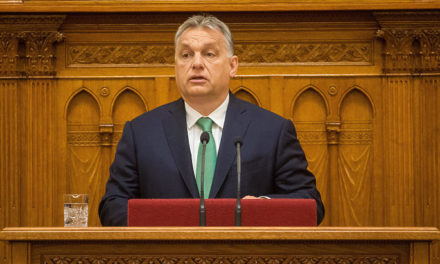A nation that does not know its past does not understand its present, and cannot create its future!"
Europe needs Hungary ... which has never allowed itself to be defeated.
It is a commonplace that IV. After a seven-year reign, in 1242, after returning with his family from the castles of Trau and Klissza,
Béla Based on his experiences, he ordered the construction of stone castles, among other things. Only the noble who undertook the construction of the stone castle and the deployment of the military necessary for its defense received a new estate, certificate of privilege, and rank. This aspiration was also confirmed by the Synod of Lyons, which met in 1245. European rulers received instructions to build fortresses, primarily from the Pope. The Mongol armies occupied the territories east of Hungary until 1240. Among other things, the Golden Horde conquered Halics and Lodomeria (Vlagyimir). Halics, also known as Galicia or Gácszorja in the 11th-12th century. century came under Hungarian rule. At the request of Russia, the first campaign Szent László against Halics, which then changed hands several times. II . András was only able to keep it at the cost of tenacious fighting. The subjugation by the Mongols lasted until 1349, when III. Casimir reconquered the former Christian territories.
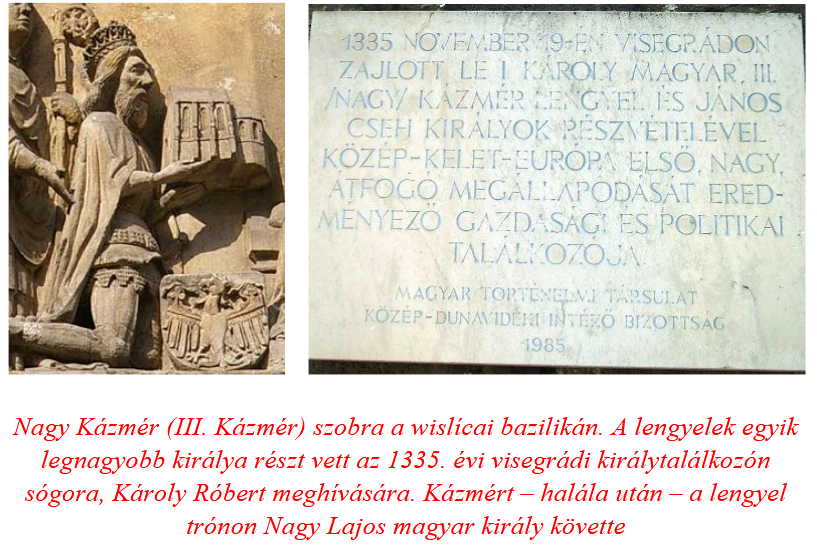
The Mongol invasion made King Béla realize that he had to get along with the big landowners, the high priests and the nobles. The king changed his property policy, and after that he no longer sought to take back the lands, but to legitimize the properties in private hands. ARC. From the middle of the 13th century, Béla began preparing more seriously to fend off another Mongol attack. (During the second major attack that also affected Hungary in 1258, Tatars actually attacked our country.) Even before that, modern stone castles were built, which he was able to persuade the nobles, high priests, and nobles of lesser power to do so with more and more property donations. The proportion of private castles compared to royal fortifications has risen to over 60% in about three decades. The king and his family set a good example by building stone castles.

However, due to the donation of royal lands, royal revenues decreased, so royal regalia (customs, salt trade, minting of new money) became more and more important. Urbanization can be observed in these years (Zólyom, Körmend, Besztercebánya.) The construction of Buda Castle began in 1243 on "Újhegy in Pest". Most of the population of Pest was moved to Várhegy. The protective fortress was completed in 1255. It was also the duty of the cities and the owners to exhibit the heavy cavalry. In addition to what was described above, one of the king's most significant actions was the resettlement of the previously expelled Kunis.

The greatness of King Béla, who returned to his country, was not only in the fact that he recaptured the country, that he took care of his destitute people, that he built external and internal defenses. Most Árpád kings would have done this. Béla's true greatness lay in the fact that he was able to break with his previous policy and realized that he had to rely on the very people against whom he mercilessly acted before the Mongol invasion. He realized that he could not do without the help and support of the nobles, high priests, townspeople and nobles. In addition to new alliances, military and economic endeavors, IV. Béla went through a change that few people have seen. The second founder of the country achieved the flourishing of the country's economy, for example, by renewing the privileges of the settlers (hospes) of Zólyom, Körmend, Corpona, and Pest, and by expanding the rights of the Szepi nobles. In 1245, according to the previous practice of the Árpád house, IV. Béla crowned his son, Prince István.
In 1246, Frigyes Babenberg (Harcias) attacked Hungary again to recapture the Hungarian territories stolen in 1241 - which King Béla had already taken back in 1242. However, Frigyes fell in the battle along the Lajta (at Bécsujhely). He had no successor, thus the Babenberg house, which ruled Austria, became extinct. (Although the last descendant of the family died in the battle against the Hungarians, the heavily armored German troops defended their territory. It should be noted that Frederick II deserved the nickname "warrior" because he was constantly at war with his other neighbors. Austria is fifth After the death of its prince - his predecessors had the title Margrave of Ostmark - there was a power vacuum that only ended in 1278, when the Habsburgs came to power. One of the great contradictions of history is that the Habsburgs, who replaced the Babenbergs, came to power with the help of the Hungarians.)
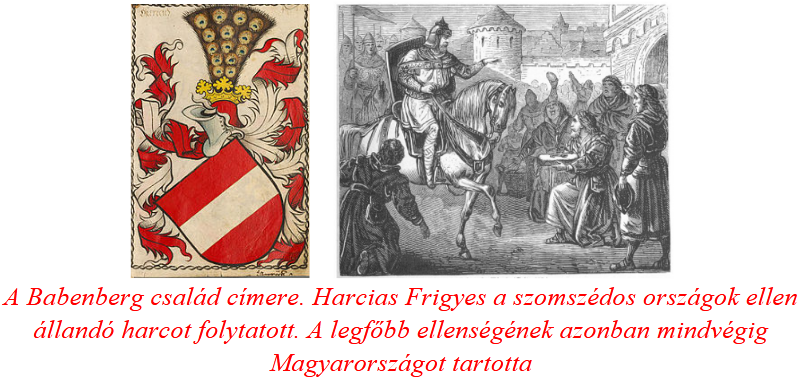
Ten years after the Mongol invasion, the economic life of the country flourished, the Hungarian people, with the support of the hospes, rapidly built castles, villages, churches, and monasteries. In these years, the first gold and silver mines were discovered, which brought about the spread of financial management. It should be emphasized that in 1255 IV. Béla donated the proceeds of the Buda fair to the nuns of Margitsziget. Margit the royal couple - Béla Árpád and Mária Laszkarisz - committed herself to God as a child, who lived a strict, sometimes self-pitying life in the monastery of the island surrounded by the Danube.
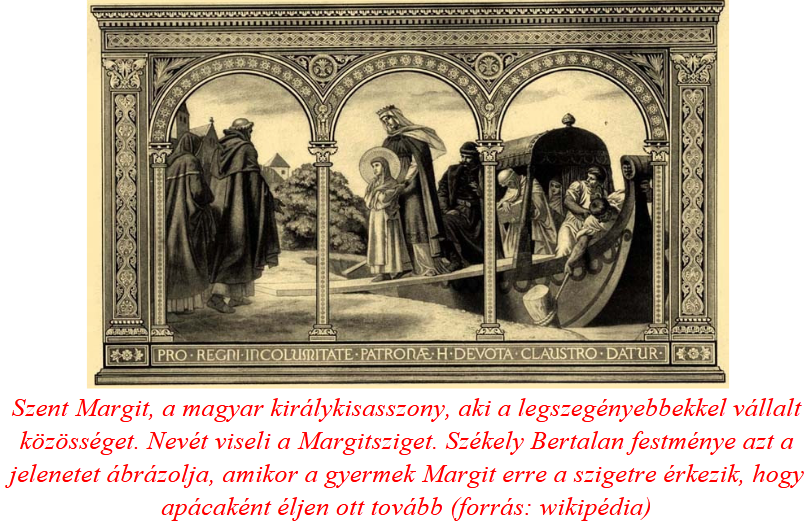
Prince István exercised his sovereign rights as early as the 1260s, and was then turned against his father by the opposition lords. II was repeated. András and Prince Béla's tension with each other decades earlier. In addition to internal contradictions, the results of economic and political life were also weakened by foreign wars. The first Moravian battle took place in the summer of 1260, which IV. Béla and II. It took place between the Czech King Ottokar As a result of the Hungarian defeat, Béla was forced to renounce the Austrian territories. In addition to the loss of territory, the peace treaty was also beneficial for the Hungarians, since Ottokár married IV. Béla's granddaughter, Kunigunda .
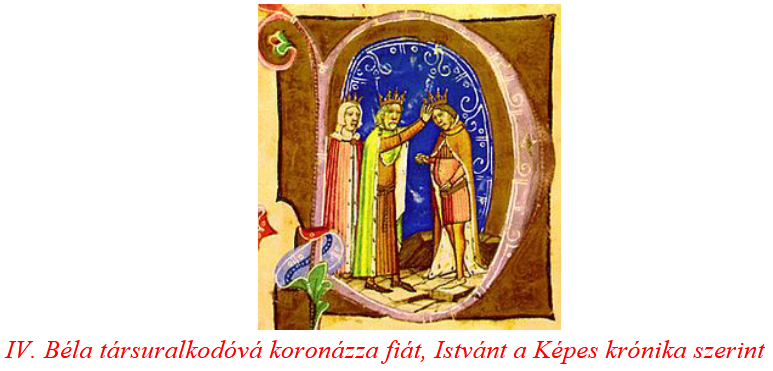
István scattered the money, shared power with the barons, gifted the royal estates indiscriminately, and accumulated the positions in order to win over the lords. A competition started between the lords to see who could build a stronger, bigger castle. Anyone who fell behind in this was reduced to the level of a vassal (servant of a greater lord). It was then that the system of familiarity was formed in our country. Subordination and subordination in Hungary, as the name implies, resulted in a system with a family structure. In contrast to the Western feudal lord system, in which the differences in wealth (land holdings) appeared in a much harsher way between nobles and nobles, not to mention the serfs who were in a completely vulnerable position. In 1267, under pressure from the royal servants, the king issued a law at the national assembly in Esztergom, confirming the Golden Bull, which primarily gave rank and security to the servants against the barons.
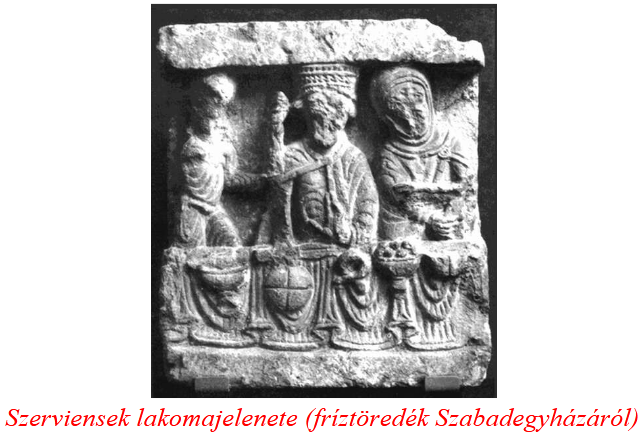
This was the Hungarian peculiarity that meant the system of "belonging to one family", and this was considered exceptional in the Europe of the time. For the sake of completeness, it should be noted that the noble families with huge estates - the Csák, Aba, Kán, Kőszegi, Borsa - were formed in these years, which then became IV. After Béla's death, they were already in opposition to the central power. (Our historiography mentions them as little kings.) An armed struggle broke out between Béla and István, who also ruled Transylvania. The decisive battle took place in 1265, at Isaszeg. After that, they made peace, but the tension between father and son remained. Béla's family on his deathbed II. Ottokár recommended him for protection. One of the famous rulers of Hungarian history, the second founder of the country, died of natural causes in 1270 at the age of 64. (This was considered unusual, because few of the 23 Árpád kings died of natural causes. In the case of the majority, it can be assumed that their deaths were hastened by foreign intervention.
At the time of the Hungarian Principality, the persons of the six princes were still "protected", without exception they died of natural causes.) Béla had to be afraid of assassinations all his life, as they attempted to kill him every 3-4 years. Our great king and his wife, Mária Laszkarisz , were laid to rest in the church of the Franciscans in Esztergom.

After the king's death, the noble leagues turned against István, who had been supported against his father until now. , István V (1270-1272) was at war with his old opponent, the Czech Ottokar. In the midst of the feud, the lord's opponents kidnapped his child, the minor László. István was outraged by the audacity of the lords and the foreign power controlling them. After that, he devoted all his energy and time to freeing his child. Perhaps this is exactly what the power-hungry plotters wanted.
 However, István died in 1272, under unclear circumstances, at the age of 33. ARC. Béla's son survived the Mongol invasion as a child in the castle of Klissza, and later became the prince of Slavonia, Transylvania and Styria. The talented but ambitious young man was careless in the face of the scheming of the lords, and this was probably his downfall. In order to understand the historical events following the extinction of the Árpád house, it should be mentioned that Duke István opposed the alliance with Ottokar during his father's lifetime. When he was already pursuing his own foreign policy, in Melfi in 1269 he concluded a double marriage and mutual aid contract with Neapolitan
However, István died in 1272, under unclear circumstances, at the age of 33. ARC. Béla's son survived the Mongol invasion as a child in the castle of Klissza, and later became the prince of Slavonia, Transylvania and Styria. The talented but ambitious young man was careless in the face of the scheming of the lords, and this was probably his downfall. In order to understand the historical events following the extinction of the Árpád house, it should be mentioned that Duke István opposed the alliance with Ottokar during his father's lifetime. When he was already pursuing his own foreign policy, in Melfi in 1269 he concluded a double marriage and mutual aid contract with Neapolitan
king Charles I. The double marriage meant the union of Prince László and Izabella of Anjou , and Mária of Árpád-házi and Károly of Anjou This latter marriage later laid the foundation for the accession of the Neapolitan Anjou to the throne in Hungary.
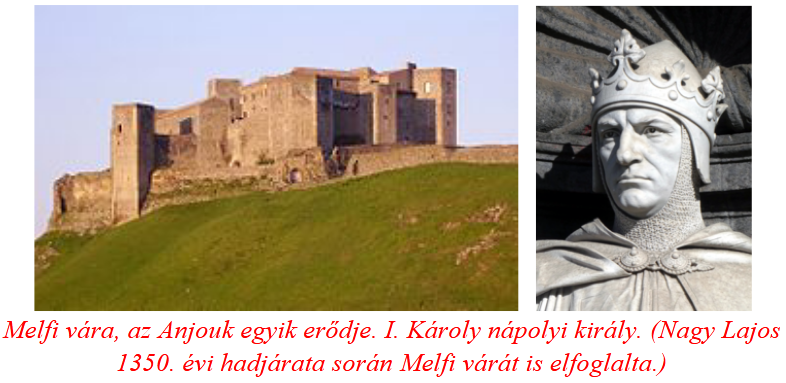
István's child, the ten-year-old Prince László, was held captive by the Habsburgs. They did this in the hope that by marrying the prince Rudolph of Habsburg , they could obtain the Hungarian throne.
It can be assumed that the sudden death of the 33-year-old Hungarian king, who was not suffering from any illness, was not accidental. There is no evidence that he was murdered. However, it is a fact that on the altar of Habsburg interests, looking back over the past centuries, many Hungarian historical figures who strove for the independence of the homeland were in the wrong place at the wrong time, and therefore paid with their lives. According to other sources, Joachim of the Gutkeled family , a Slavonian, kidnapped the child László from the royal delegation to Dalmatia in 1272. The event was followed by nationwide riots. After the death of István V, his son László came to the throne IV. László (1272-1290).
László's mother of Prince Szejhán Kun named Erzsébet , whose sixth child the heir to the throne was.
The life path of the penultimate Árpád house king and his often unusual actions were also determined by his origin.
László Kun , not because of his origin, but because of his policy of supporting the Kunas .
László was made of legal age in 1277 at the Rákos parliament. The fifteen-year-old young man tried to bring order among the marauding lords, with more or less success.
The young man, who dressed in the Kun fashion and followed the Kun customs and lifestyle, neglected Christian customs. from his wife, Izabella of Anjou , and mostly spent his time with Kun girls.
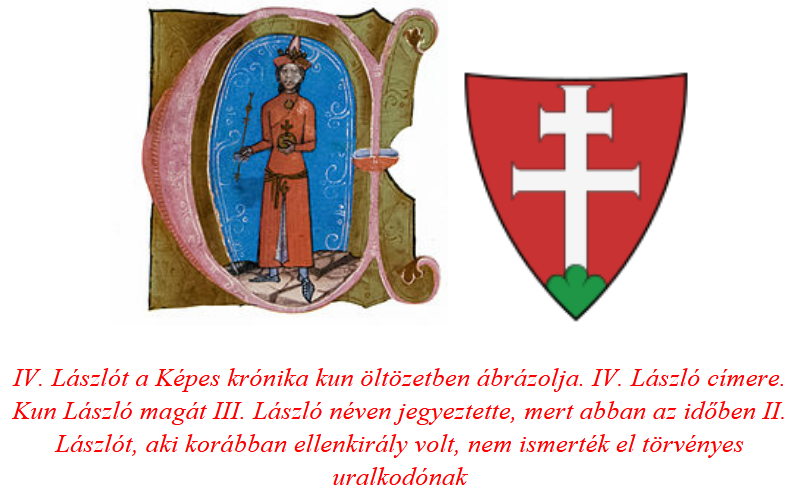
It is a well-known event, which later became one of the great contradictions of Hungarian history, that László Kun, in the decisive second Moravian (Dürnkrut) battle of 1278, defeated
the powerful II. He took up arms against Ottokár. There was also a domestic political reason for the decision, as Henrik Kőszegi, the lord of the western parts of the country, entered into an alliance with Ottokar. The importance of the battle lay in the fact that László Kun, at the head of his army of about 18,000 men, supported Rudolf Habsburg, who was at the head of an almost insignificant and unknown army of only 2,000 men at the time. The Kun-Hungarian-Székely-Beshen army led by King László, with his Austrian ally on his side, won a victory over the nearly 30,000-strong Czech and German-Roman troops. Ottokár himself fell in the battle. This event marked the beginning of the rise of the Habsburg family, which then became one of the most powerful dynasties in Europe. (We Hungarians often add that if László Kun had known this... Then presumably he would not have helped Rudolf to victory, whose descendants caused a sea of pain and suffering to the Hungarians, and had a large part, among other things, in what happened at Trian.)
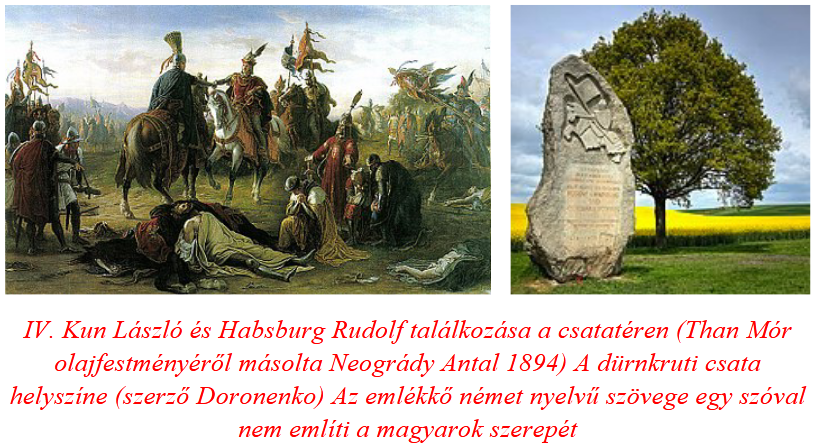
With László's rambunctious politics, he also faced the Pope, which later became fatal for him.
The civil war caused immeasurable suffering to the country, which King László tried to remedy in 1278 with the alliance with the Habsburg Rudolf, and then in 1279, at the Tétényi Parliament. At the national assembly convened in Tétény, the Kun law was passed, which in one point confirmed the settlement of the Kuns, which, however, came at a high price. Because the papal envoy, Bishop Fülöp of Fermo, who arrived in Hungary at that time, forced the Kunis to convert to Christianity. László carried this law through his circle of true and kind kunjas, but with that he lost their support. (Similar events took place as before the Mongol invasion, when leader Kötöny Kun was murdered.)
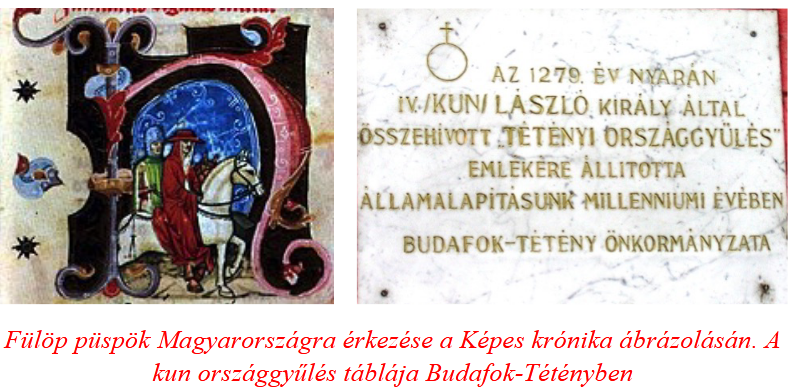
Although László Kun was forced to carry out the Pope's request, he refused his Kun blood.
What was even more important, he lost the trust and armed support of the Kunis, who provided the military support of his power. Civil wars further weakened the country. The central control practically ceased, sometimes one or the other lord seized power. This led to the Battle of Lake Hód in 1282, when László was forced to act against the Kuns. The battle near Hódmezővásárhely lasted three days, with alternating success. In the end, the king's Peseny-Szekely horsemen decided the outcome of the battle. However, the real loser was himself, since he destroyed his own armed support.

The difficulties were compounded by the invasion of the country by the Tatars in 1285. This was the second time the Tatars actually attacked the country, causing great destruction. Meanwhile, IV. King László spent his time among the Kunjas, perhaps already forgetting the example of his great predecessor, Saint László . That of King László, who, in the event of such an attack, immediately marched there at the head of his army and expelled the invaders from the country. In addition, László Kun was forced into a two-faced policy when he responded to the papal threat with persuasion in order to avoid excommunication. Bishop Lodomér of Várad directly asked the Pope to launch a crusade
against Hungary. ARC. Miklós had enough problems. Among other things, it was during these years that Christianity lost the city of Acre, the last stronghold of the Holy Land. The city in which in 1218 II. András and his crusaders also turned around.

László Kun's double life was brought to an end by a party in the camp next to the Körzöz castle. King László was secretly assassinated on one night in the summer of 1290 Árboc, Törtel and Kemence The young king, only 28 years old, ended his life in such an inglorious manner. Despite his faith-breaking lifestyle, his body was buried in consecrated ground by the bishop of Csanád. (Some of the researchers, relying on the centuries-old belief, claim that László Kun was actually the last king of the Árpád house, because the Endre III, , gives cause for doubt.)

The throne came from Venice III. András (1290-1301) occupied it. The young King II, who ascended the throne at the age of 25 . of
András from his third wife, Beatrix Estei . Raised in a foreign land, the king tried to rely on the church and the common people at first. The barons did not tolerate anyone, even the legally elected king, rising above them. (It was mentioned earlier that when Endre II died, Beatrix had to flee the court, and on the way, she gave birth to her son István on German soil. The adventurous young man married Tomasina Morosini , and from this marriage Prince András was born
.)
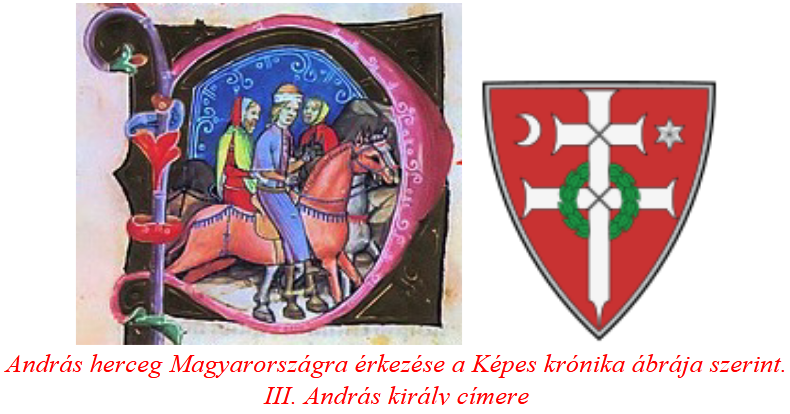
In 1290, the disunity and the strife for the throne brought the country to such a low point that it recalled the time of the Mongol invasion.
Fortunately, the king who arrived from a foreign land was no longer subject to the same distrust as Beatrix of Estei, who had previously been forced to flee. Not least because in the hands of the barons - according to their belief - the king was a trump card that could be played at any time. The young king was also supported by the two most powerful lords, Máté Csák and Henrik Kőszegi, which gave András faith and hope. At the parliament held in Óbuda in 1290, some important but difficult to implement agenda items were created. In essence, the foundations of an orderly state were scorned. The problem was primarily that the barons were clinging to their previously acquired possessions. At the meeting in Gyulafehérvár in 1291, the king made the Transylvanian Saxons interested in the development of trade. Domestic politics and, in this connection, economic life stabilized, but the king also had to reckon with external attacks. Even then, the Habsburgs posed the biggest threat. The Hungarian-Austrian war, which neither side really had an interest in, ended with the Peace of Hainburg after a few minor skirmishes. The Hungarian king recovered the western castles and estates that had previously fallen into Austrian hands , most of which belonged to the Kőszeg family. However, the powerful family - and the other barons - did not implement the royal decisions, and thus the country descended into anarchy again.
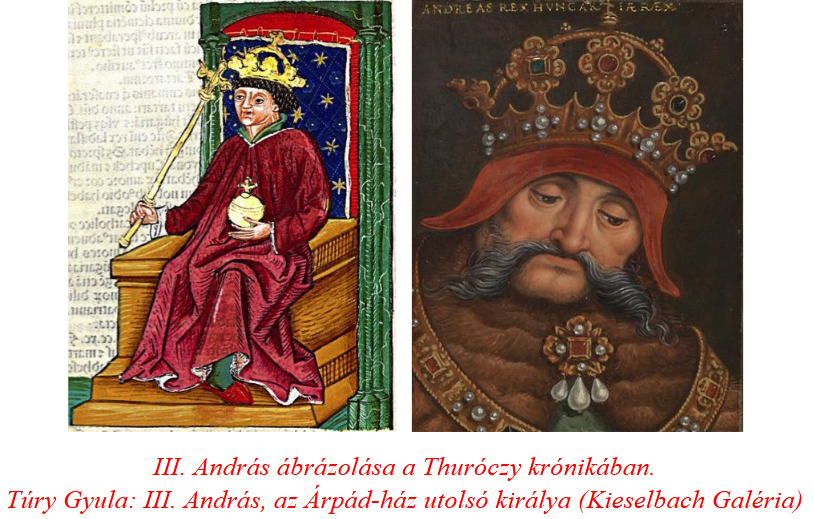
In the last years of the 13th century, the House of Anjou, with papal support, increasingly indicated its claim to the Hungarian throne. , Róbert Károly (Caroberto), who was selected for the throne, already III. Endre . Even when the king was still alive, the then 34-year-old ruler had no illness whatsoever. (It should be noted that Endre Velencei also came to Hungary when László Kun was still alive.) At that time, however, IV. László's days were already numbered.
That's how it was III. Also in the case of Endre. The Pope made another attempt when he wanted to see the Neapolitan royal family on the Hungarian throne. II. King Charles of Naples already sent his grandson Carobert to Hungary in August 1300, but the Hungarian king did not take the risk seriously. This is understandable if we consider that at that time his power was already stable, he could count the German king Albert , and a significant number of barons stood by him.
Then the "unexpected" event occurred. The sudden death of András' mother, Tomasina, at the end of 1300 could have been a warning sign. A few weeks later, the otherwise healthy, 35-year-old monarch also died unexpectedly on January 14, 1301. The cause of death is still unknown, but poisoning is not excluded, which was already mentioned in the records of contemporaries among the possible causes of death. As paladin István Ákos put it, "András, the illustrious king of Hungary, has died, the last golden branch that sprung from the lineage, tribe and blood of King Saint István, the first king of the Hungarians, on his father's side."
After the king's death, the fight for the throne began immediately, which caused one of the most serious crises in Hungarian history.

Libra
Two centuries passed from the death of Saint László to the extinction of the Árpád house. These two hundred years were, on the one hand, a continuation of the glorious era that passed from Árpád to the reign of King Saint László. On the other hand, however, the central power weakened as a result of the throne disputes, and especially the donation of royal estates. The Mongol invasion also involved a lot of blood loss, but it did much more harm to the Kingdom of Hungary when the barons started behaving like petty kings. The Csák, Kőszegiek, Borsák, Abák, and László Kán could claim such huge territories that the royal power was probably restricted only to the area between the Danube and the Tisza, and the Fehérvár and Veszprém areas. Despite this, the Árpáds kept the country together, and no one questioned the primacy and authority of the king. The wonderful natural, cultural and historical unity that we call the Carpathian Basin was considered one of the great powers of Europe at the time. It should be noted, however, that the conquering dynasty never called itself the House of Árpád, they actually considered themselves the Turul family, although this term also only appears in the chronicle of Simon Kézai. In the Middle Ages, the period of the Árpáds was the period of the generation of holy kings. Most of the peoples of Europe called this country pagan, foreign, and barbarian for centuries. The greatest significance of the Árpáds' reign was that the continuous attacks from the east, south and west could never break the independence and self-reliance of the people of the Carpathian Basin. The ruling dynasty of the so-called pagan country produced the most saints among all European ruling families, and what's more, the Hungarian kings had apostolic power. This meant that the Pope could not intervene in the life of the ecclesiastical organization of the Kingdom of Hungary. The Árpáds laid such strong foundations that Hungary remained an independent and independent state even after two centuries.
Author: Ferenc Bánhegyi
The parts published so far can be read here: 1., 2., 3., 4., 5., 6., 7., 8., 9., 10., 11., 12., 13., 14.




